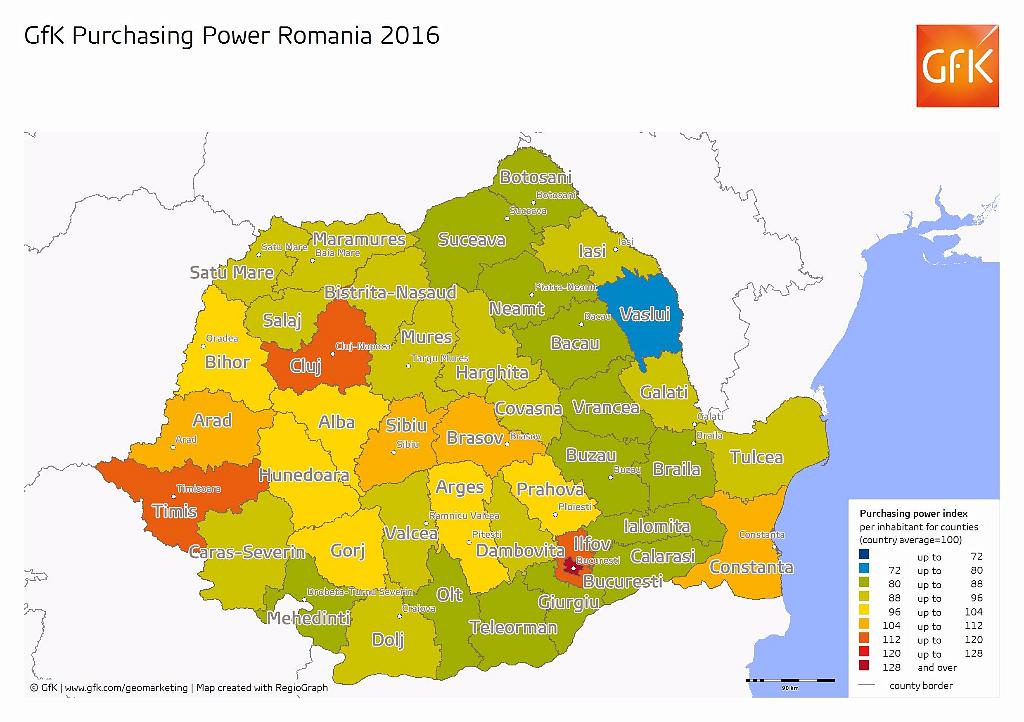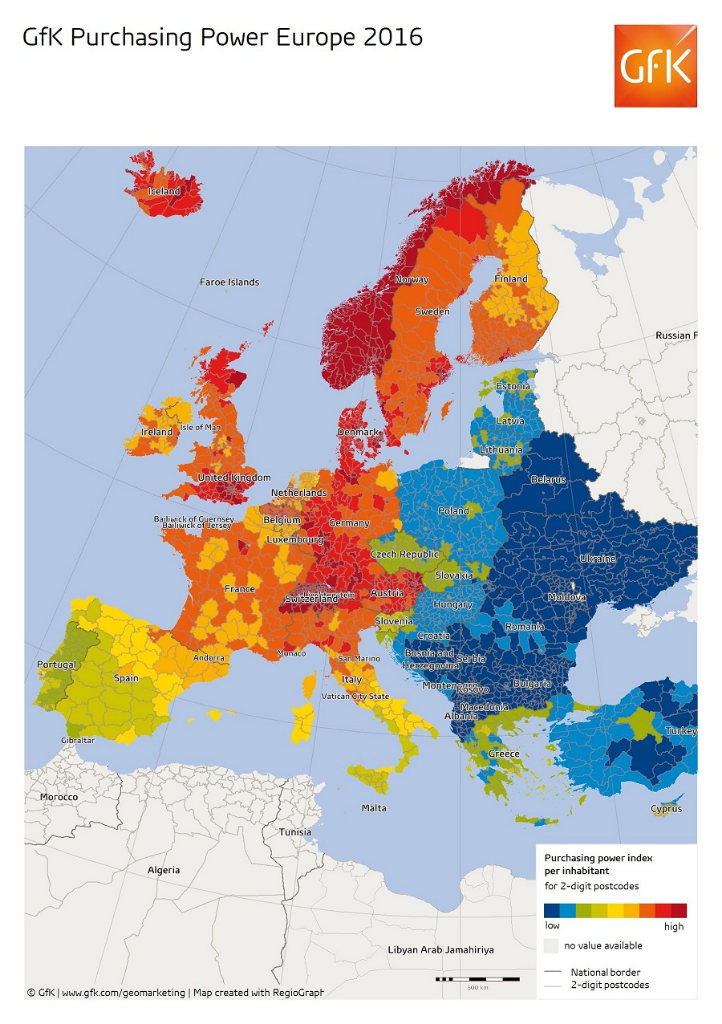Purchasing power in Romania, a third of European average despite 12% growth in 2016

The nominal purchasing power per-person in Romania in 2016 went up 12% year-on-year, to EUR 4,181 according to the Gfk Purchasing Power Europe 2016 report. Romania thus recorded one of the highest increases in the disposable income per-capita, last year, but only ranked 33rd out of the 42 European countries included in the study, the same as in the previous year.
Despite last year's increase, the average purchasing power in Romania was approximately a third of the European average, of EUR 13,672, a fifth of the level in Europe's biggest economy - Germany (EUR 21,879), and only a tenth of the level in Switzerland (EUR 42,300).
Romania placed above neighboring Bulgaria, ranked 34th with a disposable income per-capita of EUR 3,440, but bellow Hungary, ranked 30th with EUR 5,549, Turkey, with EUR 4,941, and Montenegro with 4,874.
Bucharest inhabitants have the highest purchasing power in the country, with EUR 6,288 available per person, 50% more than the country average and at similar levels with the Poles. The capital is followed by Timis county, with EUR 4,987, Cluj county with EUR 4,931, and Ilfov with EUR 4,916. The counties of Brasov and Constanta both reported values of over EUR 4,500, followed by Sibiu county with EUR 4,426, Arad county with EUR 4,349, Prahova county with EUR 4,316, and Arges county with EUR 4,263.
These top ten counties are also the only ones above the national average, the rest falling bellow it. Vaslui county took up the last spot, with a per-capita disposable income of EUR 3,054, similar to the levels in Serbia and Macedonia, the counties that rank 35th and 36th in Europe.
 Europe-wide, the average per-capita purchasing power stood at EUR 13,672 for the 42 countries evaluated in the study, which is a nominal increase of approximately 0.3% year-on-year. Liechtenstein, Switzerland, and Luxembourg recorded the highest average levels, while Belarus, Moldavia, and Ukraine had the lowest values.
Europe-wide, the average per-capita purchasing power stood at EUR 13,672 for the 42 countries evaluated in the study, which is a nominal increase of approximately 0.3% year-on-year. Liechtenstein, Switzerland, and Luxembourg recorded the highest average levels, while Belarus, Moldavia, and Ukraine had the lowest values.
The study also found a large gap between net incomes in Europe. Inhabitants of Liechtenstein, the country that tops the ranking, have almost eighty times as much disposable income per person as inhabitants in Ukraine, which has the lowest purchasing power in Europe. The four countries with the greatest number of inhabitants - Germany, Great Britain, France, and Italy - comprise approximately 40 percent of Europe's population and almost 60 percent of the continent's purchasing power. At the same time, Liechtenstein and Switzerland significantly outpace the others with purchasing power values that are 3 to 4.6 times (respectively) the European average. All other countries in the top ten have at least 1.5 times the average European per-capita disposable income.
Purchasing power is a measure of per-capita disposable income after the deduction of taxes and social security contributions and including any benefits received from the state. The study indicates per-person, per-year purchasing power levels in euro and as an index value.
editor@romania-insider.com
(Graph source: Gfk)















